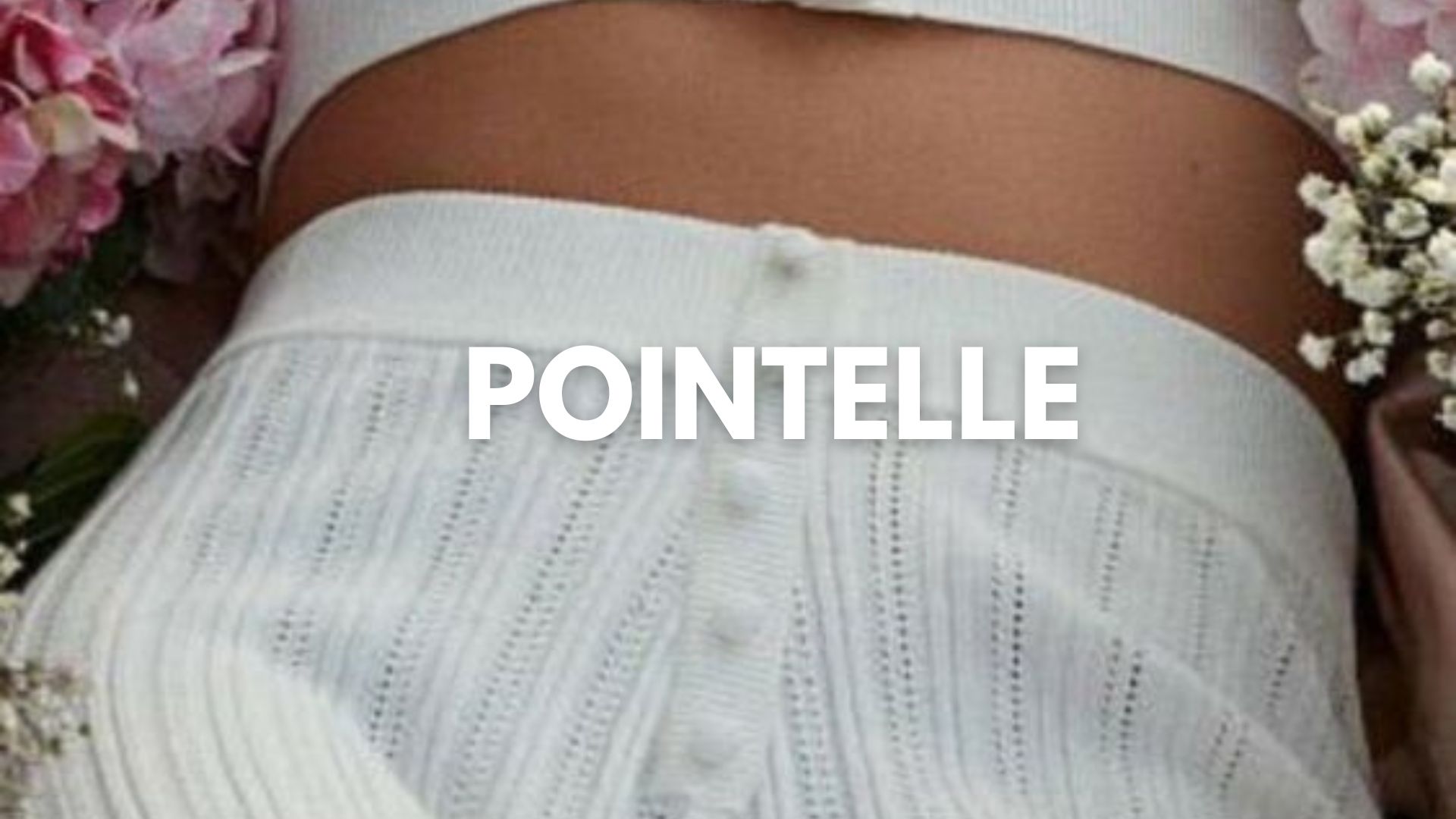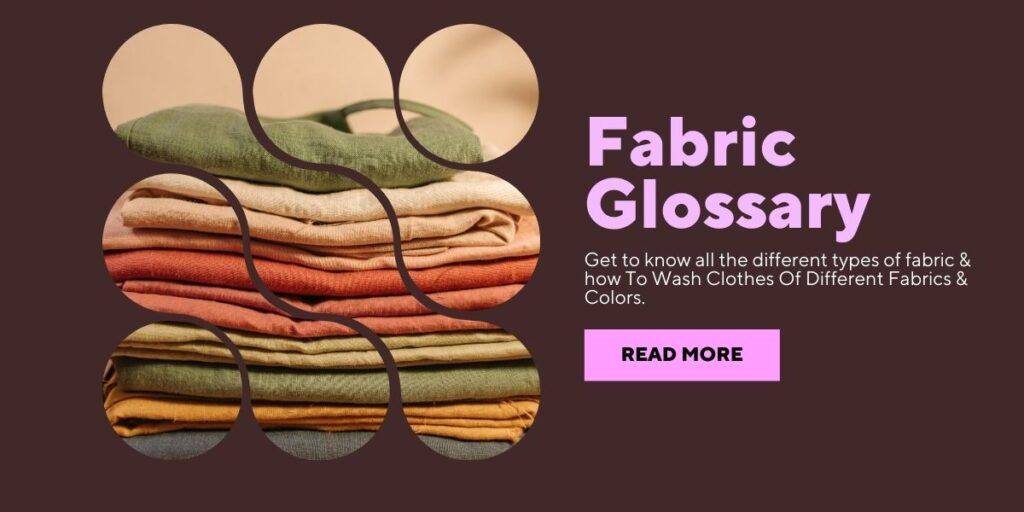Pointelle Fabric Guide
A Detailed Guide to Pointelle – Features & Care
What is pointelle?
Pointelle, a term that brings to mind images of delicate, intricate patterns in knitwear, has a rich history and a significant place in contemporary fashion. Originally derived from the French word “point”, meaning stitch is a knitting technique that creates a lacy, openwork pattern. Over time, it has evolved from traditional use in heirloom garments to a staple in modern-day fashion, offering both aesthetic appeal and practical benefits.

Pointelle Knitting
A meticulous and skillful process: it involves specific techniques and tools that are essential for achieving the characteristic eyelet patterns. From choosing the right needles to understanding the variety of patterns and designs, this section delves into the intricacies of pointelle knitting.
Comparing Chenille: Velvet, Microfiber, and More
When comparing chenille to other fabrics like velvet and microfiber, it stands out for its durability and ease of care. While velvet exudes luxury, chenille offers a balance of luxury and practicality. This comparison can include perspectives on “chenille vs velvet” and “chenille vs microfiber,” highlighting the suitability of each for different applications.
The Pros and Cons of Chenille Fabric
Known for its delicate and intricate openwork patterns, offers both advantages and challenges. Understanding these can help in making informed decisions when using or wearing pointelle.
Pros of Pointelle Fabric
- Aesthetic Appeal: is visually stunning, featuring unique eyelet designs that add a touch of elegance and sophistication to any garment.
- Breathability: The openwork nature makes it highly breathable, ideal for warm weather or layered clothing.
- Versatility in Fashion: can be dressed up or down, making it suitable for various occasions, from casual wear to more formal events.
- Lightweight and Comfortable: The fabric is generally light and comfortable to wear, providing ease of movement.
- Timeless Style: has a classic, timeless appeal that doesn’t go out of fashion, ensuring longevity in your wardrobe.
- Feminine Touch: The delicate patterns add a feminine flair to clothing, often used in women’s fashion for a soft, romantic look.
Cons of Pointelle Fabric
- Delicate Nature: Is prone to snags and tears due to its openwork and intricate patterns, requiring careful handling.
- Maintenance: Caring can be challenging. It often requires hand washing or gentle cycles and careful storage to maintain its shape and design.
- Transparency Issues: Depending on the design, some design can be quite transparent, necessitating the need for layering or strategic placement in garments.
- Limited Insulation: While breathable but is not the best for insulation, making it less suitable for colder weather without proper layering.
- Cost: Due to the intricate crafting process, garments can sometimes be more expensive than simpler knit fabrics.
- Styling Challenges: The distinct look might not easily blend with all fashion styles and can be challenging to pair with other textures or patterns.
With its elegant designs and practical challenges, offers a unique choice in the world of textiles. Whether it’s the right choice depends on individual needs, preferences, and the intended use of the fabric.
Uses in Fashion
Pointelle’s role in the fashion industry cannot be overstated. This section explores the trend analysis of pointelle over the years and showcases some iconic outfits that have left a mark on the fashion world. It’s also widely used for sleepwear
From high-end designers to mainstream brands, pointelle has made a significant impact on the fashion industry. This section examines the evolution of pointelle within the industry, highlighting key designers and brands that have championed its use.
Caring for Pointelle Garments
- Gentle Washing: Use a mild detergent and hand wash or select a gentle machine cycle to maintain the fabric’s integrity.
- Avoiding Heat: Dry garments flat and away from direct heat sources to prevent shrinking and misshaping.
- Proper Storage: Store items folded rather than hanging to avoid stretching.
- Handling Snags Carefully: If snags occur, gently push the snagged thread back into place using a knitting needle or similar tool.
- Regular Inspection: Periodically check for loose threads or signs of wear and address them promptly.
- Avoiding Harsh Chemicals: Stay away from bleach and other harsh chemicals that can damage the delicate fibers.
- Layering with Care: When wearing, be mindful of accessories and other clothing that might catch and pull the fabric.
- Professional Cleaning: For intricate or heavily embellished garments, consider professional cleaning to preserve quality.
- Moth Prevention: Use natural moth repellents like cedar or lavender sachets when storing clothing to protect against damage.
- Ironing Guidelines: If ironing is necessary, use a low heat setting and a pressing cloth to avoid direct contact with the heat source.
This guide aimed to provide a thorough understanding of pointelle, from its cultural significance to practical advice for maintenance. Pointelle is not just a fabric; it’s a testament to the beauty of skilled craftsmanship and the enduring allure of intricate design. As we continue to see innovations in textile technology and fashion trends, pointelle remains a cherished and sought-after material, weaving its way through the fabric of our lives with grace and style.
FAQ
What is another name for pointelle fabric?
Pointelle fabric is often referred to simply as “eyelet” due to its characteristic eyelet holes that create the decorative, openwork patterns. However, it’s important to note that “pointelle” specifically refers to a knitting technique that produces these patterns, while “eyelet” can be used more broadly for similar patterns in various types of fabric.
Is pointelle fabric stretchy?
Yes, pointelle fabric can be stretchy, but this largely depends on the type of yarn used and the knitting technique. When made with elastic fibers or knitted in a way that allows for give, pointelle fabric can offer a comfortable amount of stretch. This stretchiness contributes to the fabric’s comfort and adaptability in different garment designs.
What is the origin of the pointelle fabric?
The exact origin of pointelle fabric is not clearly documented, but it is a style that has evolved from traditional knitting techniques. Pointelle knitting likely developed as a variation of lace knitting, with influences from various European knitting traditions. It became particularly popular in the fashion world for its delicate and feminine aesthetic.
What is pointal rib?
“Pointal rib” might be a misunderstanding or misinterpretation of either “pointelle” or “rib knit.” Pointelle refers to the openwork knitting technique, while rib knit is a basic knitting pattern that creates vertical ridges (alternating between knit and purl stitches). They are distinct techniques, with pointelle being more decorative and rib knit more structural. There isn’t a widely recognized knitting technique known as “pointal rib,” so it’s possible this term might be a conflation of the two or a less common term used in a specific knitting context.

